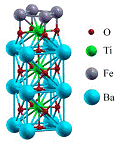Department of Physics and Astronomy: Publications and Other Research

Evgeny Tsymbal Publications
ORCID IDs
Tsymbal http://orcid.org/0000-0002-6728-5563
Document Type
Article
Date of this Version
2-8-2019
Citation
Physical Review Materials (2019) 3: 021401(R)
doi: 10.1103/PhysRevMaterials.3.021401
Abstract
The interfacial coupling between the switchable polarization and neighboring magnetic order makes ferroelectric/ferromagnetic composite structures a versatile platform to realize voltage control of magnetic anisotropy. We report the nonvolatile ferroelectric field effect modulation of the magnetocrystalline anisotropy (MCA) in epitaxial PbZr0.2Ti0.8O3 (PZT)/La0.8Sr0.2MnO3 (LSMO) heterostructures grown on (001) SrTiO3 substrates. Planar Hall effect measurements show that the in-plane magnetic anisotropy energy in LSMO is enhanced by about 22% in the hole accumulation state compared to the depletion state, in quantitative agreement with our first-principles density functional theory calculations. Modeling the spin-orbit coupling effect with second-order perturbation theory points to the critical role of the d-orbital occupancy in controlling MCA. Our work provides insights into the effect of ferroelectric polarization on the magnetic anisotropy at the composite multiferroic interfaces, paving the path for their implementation into high-performance, low-power spintronic applications.


Comments
Copyright 2019, American Physical Society. Used by permission